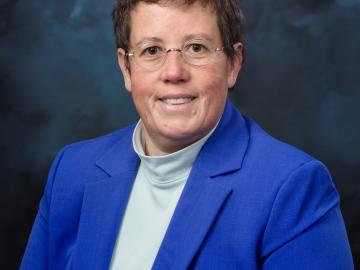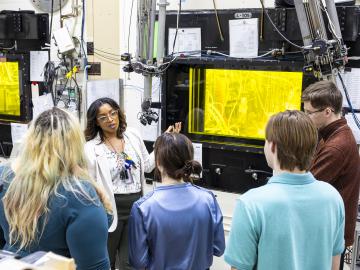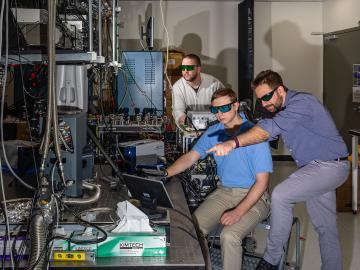
Filter News
Area of Research
- Advanced Manufacturing (2)
- Biological Systems (1)
- Biology and Environment (8)
- Computer Science (2)
- Energy Science (30)
- Energy Sciences (1)
- Fusion and Fission (5)
- Fusion Energy (7)
- Isotopes (6)
- Materials (25)
- Materials for Computing (4)
- National Security (4)
- Neutron Science (14)
- Nuclear Science and Technology (28)
- Nuclear Systems Modeling, Simulation and Validation (1)
- Quantum information Science (1)
- Supercomputing (21)
News Topics
- (-) Biomedical (40)
- (-) Energy Storage (45)
- (-) Grid (28)
- (-) Isotopes (26)
- (-) Nuclear Energy (63)
- (-) Space Exploration (9)
- 3-D Printing/Advanced Manufacturing (74)
- Advanced Reactors (26)
- Artificial Intelligence (66)
- Big Data (48)
- Bioenergy (40)
- Biology (29)
- Biotechnology (13)
- Buildings (30)
- Chemical Sciences (35)
- Clean Water (13)
- Composites (15)
- Computer Science (126)
- Coronavirus (25)
- Critical Materials (9)
- Cybersecurity (11)
- Education (2)
- Emergency (3)
- Environment (90)
- Exascale Computing (31)
- Fossil Energy (4)
- Frontier (24)
- Fusion (31)
- High-Performance Computing (48)
- Hydropower (1)
- ITER (2)
- Machine Learning (36)
- Materials (26)
- Materials Science (85)
- Mathematics (9)
- Mercury (3)
- Microelectronics (2)
- Microscopy (18)
- Molten Salt (4)
- Nanotechnology (25)
- National Security (36)
- Neutron Science (82)
- Partnerships (29)
- Physics (30)
- Polymers (14)
- Quantum Computing (20)
- Quantum Science (46)
- Security (13)
- Simulation (24)
- Statistics (3)
- Summit (40)
- Transportation (44)
Media Contacts

Early career scientist Frankie White's was part of two major isotope projects at the same time he was preparing to be a father. As co-lead on a team that achieved the first synthesis and characterization of a radium compound using single crystal X-ray diffraction and part of a team that characterized the properties of promethium, White reflects on the life-changing timeline at work, and at home.

Lætitia H. Delmau, a distinguished researcher and radiochemist at Oak Ridge National Laboratory, has received the 2024 Glenn T. Seaborg Actinide Separations Award.

ORNL scientists develop a sample holder that tumbles powdered photochemical materials within a neutron beamline — exposing more of the material to light for increased photo-activation and better photochemistry data capture.

Scientists have uncovered the properties of a rare earth element that was first discovered 80 years ago at the very same laboratory, opening a new pathway for the exploration of elements critical in modern technology, from medicine to space travel.

Researchers set a new benchmark for future experiments making materials in space rather than for space. They discovered that many kinds of glass have similar atomic structure and arrangements and can successfully be made in space. Scientists from nine institutions in government, academia and industry participated in this 5-year study.

Students from the first class of ORNL and Pellissippi State Community College's joint Chemical Radiation Technology Pathway toured isotope facilities at ORNL.

Researchers at ORNL are developing battery technologies to fight climate change in two ways, by expanding the use of renewable energy and capturing airborne carbon dioxide.

ORNL researchers have teamed up with other national labs to develop a free platform called Open Energy Data Initiative Solar Systems Integration Data and Modeling to better analyze the behavior of electric grids incorporating many solar projects.

Mohamad Zineddin hopes to establish an interdisciplinary center of excellence for nuclear security at ORNL, combining critical infrastructure assessment and protection, risk mitigation, leadership in nuclear security, education and training, nuclear security culture and resilience strategies and techniques.

ORNL scientists are working on a project to engineer and develop a cryogenic ion trap apparatus to simulate quantum spin liquids, a key research area in materials science and neutron scattering studies.


